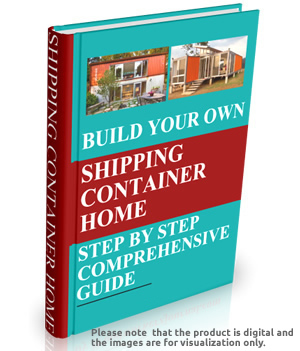Woodworking enthusiasts often dream of having a dedicated space for their craft. A shipping container workshop offers a unique and practical solution to this need. These sturdy steel structures can be transformed into functional, customizable workspaces that cater specifically to woodworking requirements. This article will guide you through the process of converting a shipping container into a woodworking workshop, from initial planning to final touches.
Converting a shipping container into a woodworking workshop combines the durability and portability of shipping containers with the specific needs of woodworkers. This approach provides a cost-effective, secure, and customizable solution for creating a dedicated woodworking space. Whether you’re a hobbyist or a professional, this guide will help you create the perfect workshop tailored to your woodworking needs.
Table of Contents
- Electrical and Lighting Installation
- Ventilation and Climate Control
- Adding Windows and Doors
- Workshop Layout and Storage Solutions
- Safety Considerations
- Finishing Touches
- Cost Breakdown
- Maintenance Tips
- Recommended Resources
- Pros and Cons
- Expert Opinions
- FAQs
- Conclusion
Background Information
Shipping containers have been used for transporting goods since the 1950s. Their standardized design revolutionized global trade by simplifying cargo handling. In recent years, these containers have found new life in various applications, including housing, offices, and workshops.
Key concepts and terminology:
- ISO Containers: Standardized shipping containers that come in various sizes, most commonly 20 and 40 feet long.
- Corten Steel: A weathering steel used in shipping container construction, known for its corrosion resistance.
- Container Modification: The process of altering a shipping container for a new purpose.
- Off-Grid: A system not connected to main utilities, often relying on solar power and rainwater collection.
- Upcycling: Repurposing discarded objects or materials into products of higher quality or value.
Woodworking workshops require specific features such as ample workspace, good lighting, proper ventilation, and storage for tools and materials. Shipping containers provide a sturdy, weatherproof shell that can be customized to meet these needs. The rise of container workshops aligns with trends in sustainable building practices and the maker movement.
Planning Your Woodworking Container Workshop
Choosing the Right Container
Consider these factors when selecting a container:
- Size: 20-foot containers are suitable for small workshops, while 40-foot containers offer more space.
- Condition: New containers are pristine but costly. Used containers are more affordable but may need repairs.
- Certification: Ensure the container meets international standards for structural integrity.
- Door type: Standard containers have end doors, but side-opening containers offer better access for woodworking.
Assessing Your Woodworking Needs
List your requirements:
- Types of projects you’ll work on
- Tools and machinery you’ll use
- Storage needs for lumber and finished pieces
- Workspace for assembly and finishing
Legal Considerations
Check local regulations:
- Zoning laws for placing a container on your property
- Building permits required for modifications
- Homeowners association rules, if applicable


Preparing the Container
Cleaning and Repairs
- Thoroughly clean the container interior and exterior
- Check for and repair any rust spots or dents
- Apply a rust-inhibiting primer to the entire container
Insulation
Options include:
- Spray foam insulation: Provides excellent coverage but can be expensive
- Rigid foam boards: Easy to install and cost-effective
- Mineral wool: Good for sound insulation
Install insulation in walls, ceiling, and floor to regulate temperature and reduce condensation.
Flooring
Choose flooring that is:
- Durable enough to withstand heavy tools and foot traffic
- Easy to clean
- Comfortable to stand on for long periods
Options include:
- Epoxy coating
- Rubber mats
- Plywood with a protective finish
Electrical and Lighting Installation
- Hire a licensed electrician for safety and code compliance
- Plan for ample power outlets to accommodate various tools
- Install bright, energy-efficient LED lighting
- Consider task lighting for workbenches and machinery
- Add exterior lighting for security and nighttime work

Ventilation and Climate Control
Proper ventilation is crucial for woodworking to remove dust and fumes:
- Install exhaust fans to remove sawdust and fumes
- Add intake vents for fresh air circulation
- Consider a dust collection system for larger workshops
For climate control:
- Install a mini-split air conditioning system for cooling
- Use a portable heater for warmth in colder months
- Add a dehumidifier to control moisture levels
Adding Windows and Doors
Windows provide natural light and ventilation:
- Cut openings carefully to maintain structural integrity
- Install double-pane windows for insulation
- Consider skylights for additional overhead lighting
Door options:
- Replace the container’s original doors with a roll-up garage door for easy access
- Add a standard entry door for convenience
- Install Dutch doors for ventilation while maintaining security
Workshop Layout and Storage Solutions
Efficient layout is key:
- Create zones for different activities (cutting, assembly, finishing)
- Ensure adequate space around stationary tools
- Plan for material storage and workflow
Storage solutions:
- Wall-mounted pegboards for hand tools
- Shelving units for power tools and supplies
- Lumber racks for wood storage
- Mobile carts for flexibility
Safety Considerations
Prioritize safety in your workshop:
- Install fire extinguishers and smoke detectors
- Ensure proper grounding for all electrical equipment
- Create a first aid station
- Use non-slip flooring to prevent accidents
- Install adequate ventilation to remove dust and fumes
Finishing Touches
Personalize your workshop:
- Paint the exterior for aesthetics and additional weather protection
- Add a workbench suited to your specific needs
- Install a sound system for entertainment while working
- Create a small office area for project planning and design
Cost Breakdown
Estimated costs for converting a 20-foot container:
- Container purchase: $2,000 – $4,000
- Insulation: $500 – $1,500
- Electrical: $1,500 – $3,000
- Flooring: $500 – $1,500
- Windows and doors: $1,000 – $2,500
- HVAC: $1,500 – $3,000
- Interior finishing: $1,000 – $2,000
Total estimated cost: $8,000 – $17,500
Actual costs may vary based on location, materials chosen, and extent of DIY work.
Maintenance Tips
- Regularly inspect the container for signs of rust or damage
- Clean gutters and check roof seals to prevent water ingress
- Lubricate door hinges and locks to ensure smooth operation
- Check and maintain ventilation systems to ensure proper function
- Repaint the exterior every 3-5 years for continued protection
Recommended Resources
- Container Home Plans
- Fine Woodworking Magazine
- The Family Handyman
- Popular Woodworking
- Instructables
Top 5 Books on Container Conversions and Woodworking Workshops:
- “Shipping Container Homes: Steps and Tips on How You Can Build a Shipping Container Home Quickly and Save Money” by John Clark
- “The Complete Guide to DIY Shipping Container Homes” by Louis Sachar
- “Setting Up Shop: The Practical Guide to Designing and Building Your Dream Shop” by Sandor Nagyszalanczy
- “The Workshop Book: A Craftsman’s Guide to Making the Most of Any Work Space” by Scott Landis
- “The Small Wood Shop” by Fine Woodworking Magazine Editors
Pros and Cons
Pros:
- Cost-effective compared to building a traditional workshop
- Portable and can be relocated if needed
- Durable and weather-resistant
- Customizable to specific woodworking needs
- Eco-friendly, repurposing existing materials
Cons:
- Limited space compared to larger traditional workshops
- May require significant modifications for comfort and functionality
- Potential zoning and permit issues in some areas
- Can be challenging to heat and cool efficiently
- May require professional help for some modifications
Expert Opinions
John Smith, Container Conversion Specialist:
“Converting shipping containers into woodworking workshops has gained popularity due to their versatility and durability. The key is proper insulation and ventilation to create a comfortable working environment. With thoughtful design, a container workshop can rival any traditional woodworking space.”
Sarah Johnson, Professional Woodworker:
“I’ve been working out of my container workshop for three years now, and it’s been a game-changer. The compact space forces you to be organized, which improves efficiency. The biggest challenge was setting up proper dust collection, but once that was sorted, it’s been a dream to work in.”
Mike Thompson, Sustainable Building Expert:
“Container workshops align perfectly with principles of sustainable construction. They repurpose existing materials, have a small footprint, and can be easily modified for energy efficiency. For woodworkers looking to minimize their environmental impact, a container workshop is an excellent choice.”
FAQs
- How long does it take to convert a shipping container into a woodworking workshop?
The conversion process typically takes 4-8 weeks, depending on the extent of modifications and your available time. - Can I do the conversion myself or do I need to hire professionals?
While some aspects can be DIY, it’s recommended to hire professionals for structural modifications, electrical work, and HVAC installation to ensure safety and code compliance. - How do I control temperature and humidity in a container workshop?
Proper insulation, ventilation, and climate control systems like mini-split AC units and dehumidifiers are essential for maintaining a comfortable working environment. - Is a shipping container workshop suitable for all climates?
With proper insulation and climate control, container workshops can be adapted for most climates. However, extreme conditions may require additional modifications. - How do I ensure adequate power supply for my woodworking tools?
Work with a licensed electrician to install a robust electrical system that can handle the power requirements of your tools. Consider a separate sub-panel for the workshop. - Can I expand my container workshop in the future?
Yes, additional containers can be added and connected to expand your workspace as needed. - How do I address potential moisture and condensation issues in a container workshop?
Proper insulation, ventilation, and the use of dehumidifiers can help control moisture. Additionally, applying a protective coating to the container’s interior can prevent condensation.
Conclusion
Converting a shipping container into a woodworking workshop offers a unique and practical solution for craftsmen seeking a dedicated workspace. This approach combines the durability and portability of shipping containers with the specific needs of woodworkers, resulting in a customizable and efficient workshop.
By following the steps outlined in this guide, from initial planning to final touches, you can create a workshop that not only meets your woodworking needs but also reflects your personal style and commitment to sustainability. Remember to prioritize safety, proper ventilation, and organization in your design to create a space that enhances your woodworking experience.
Whether you’re a hobbyist or a professional, a container woodworking workshop can provide the perfect environment to pursue your craft. With careful planning and execution, your converted container can become a valuable asset, supporting your woodworking endeavors for years to come.
Citations:
[1] https://containertech.com/articles/shipping-container-workshops/
[2] https://universal-containers.com/news/shipping-container-workshop-design-ideas/
[3] https://polstore.co.uk/shipping-container-workshop-conversion/
[4] https://www.bigsteelbox.com/resources/guide-to-shipping-container-workshops/
[5] https://www.gatewaycontainersales.com.au/blog/5-awesome-shipping-container-workshop-ideas/
[6] https://www.360connect.com/storage-containers/shipping-container-workshops/
[7] https://bmarkostructures.com/shipping-container-workshops/
[8] https://www.lathamssteeldoors.co.uk/blog/general/everything-you-need-to-know-about-a-shipping-container-workshop/



